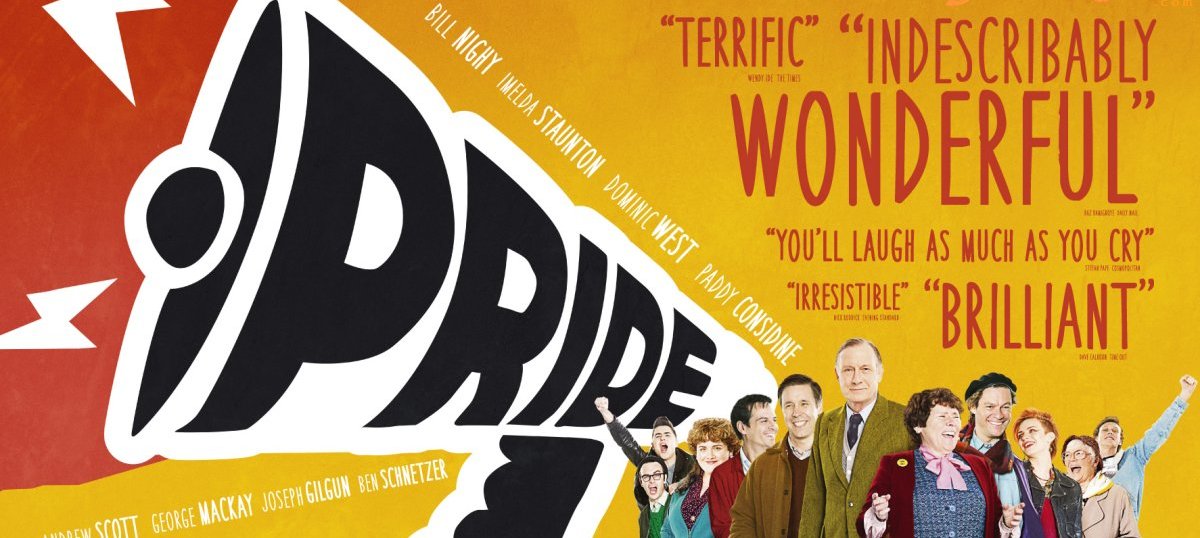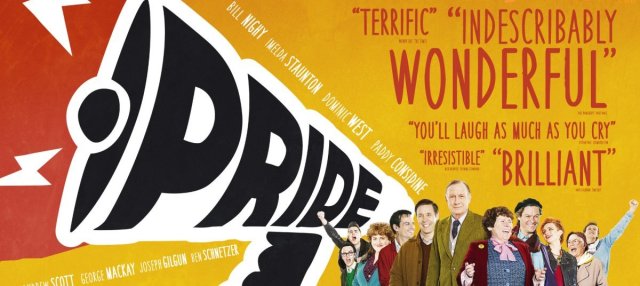GLAAD Records Gains in LGBTQ Representation in TV, While MPAA Rates the UK’s Pride NC-17
Pros and cons.

GLAAD’s survey of 2014’s prime time programming have found significant gains over 2013! Progress! Fox Television was the network with the biggest gains, with 6.5% of its characters identifying as members of the LGBTQ community. And there was very little difference, numerically at least, in regular and recurring roles for LGBTQ representation between cable and broadcast networks: GLAAD counted sixty-five on broadcast and sixty-three on cable. Cable, however, is more likely to feature LGBTQ characters of color.
From Variety:
Among networks, in a survey of programming from the 2013-14 season, GLAAD assigned a grade of “excellent” to HBO, MTV and ABC Family for the quantity and diversity of LGBT characters featured. ABC, CW, Fox, FX, NBC and Showtime were rated as good, while CBS, TLC and USA Network were cited as adequate. History, A&E and TNT were rated as failing.
Wait, you’re telling me that the History Channel isn’t that great at mentioning the lives of gay folks in between explaining how aliens built Mayan pyramids and Hitler’s sex life? I am shocked, I tell you, shocked. In their report, GLAAD also reiterated the need for television networks to pick up the slack on transgender representation, an area in which they are being outstripped by digital content providers such as Netflix.
And it’s the not-so-great news that brings us to the reveal of the MPAA’s rating forPride, a wildly positively reviewed British drama about the 1984 UK Miner’s strike. It tells the true story of a group of gay and lesbian activists who sought to circumvent Thatcherian bureaucracy that prevented unions from being financially supported by donations by partnering directly with rural mining communities. Their efforts raised around £20k to keep striking workers and their families fed, an effort that significantly allied the LGBTQ rights and Labor rights communities in the UK. The MPAA has it listed as NC-17, barring anyone under the age of 17 from seeing the movie in theaters without an adult.
Why is this remarkable? Well, because Pride contains almost entirely no sex or violence, but it does contain an ensemble of gay and lesbian characters. According to Britain’s own British Board of Film Classification, Pride‘s sexual content is limited to:
some scenes with sexual references. One shows “men in a gay club wearing ‘bondage’ clothing”, while in another scene “women roar with laughter as they find a dildo and some gay porn magazines in a bedroom”. The BBFC adds: “The images in the magazines include some strong sexualised nudity, but the images appear only briefly and in a very clearly comic context.”
In other words… less titillating than your average PG-13 Adam Sandler movie, because teenagers can watch their peers slaughter each other in ritual combat, we can cut off three of Anakin Skywalker’s limbs and set him on fire, the Joker can give people quick cut away Glasgow smiles and kids as young as thirteen can watch without parental supervision… but heaven forfend you briefly show them a dildo in any context.
The MPAA has yet to, as customary, list its reasons for the NC-17 rating.
(via Variety and The Independent)
- It’s Never Been Harder to Sneak Into an R-Rated Movie
- Six Strikes And You’re Out: What The Copyright Alert System Means For You
- Fifty Shades of Grey Movie Will Shoot for an NC-17 Rating, Leaves Us Wondering
Are you following The Mary Sue on Twitter, Facebook, Tumblr, Pinterest, & Google +?
Have a tip we should know? [email protected]
